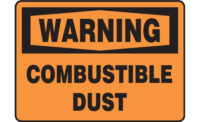One of the challenges in industrial hygiene is to continue to ensure that we are educating ourselves with evolving technology. In an age where there are new breakthroughs every day, mitigating hazards can prove difficult when there is little to no research on potential hazards to health, let alone rules and regulations to ensure that organizations are protecting the health and safety of their employees.
Additive manufacturing (AM) or 3D Printing (for this article will be referred to AM) has seen many advancements in the past decade. This technology has become accessible to more industries and to individuals for personal use due to decreasing front-end and material costs. With more industries and individuals integrating AM into their processes and activities, it is important that we as health and safety professionals understand the risks and hazards associated with this technology.
The International Organization for Standardization (ISO)/ASTM 52900 has identified and established seven (7) different categories of AM: Binder Jetting, Directed Energy Deposition, Powder Bed Fusion, Sheet Lamination, Material Extrusion, Material Jetting, and Vat Photo Polymerization. The principle behind AM is the same for these categories; to build an object up, one layer at a time. Under these categories, there are processes which are material specific.
Each of these categories and subcategories pose unique hazards from an industrial hygiene viewpoint. These are the most critical hazards we, as safety and health professionals, need to be aware of:
- Ultrafine Particles (UFPs)
- Various Volatile Organic Compounds (VOCs)
- Dermal Sensitizers – From metal and resins used.
- Combustible Dust
- Radiation (Both Ionizing and Non-Ionizing) – From Lasers and UV lamps to cure finished ‘builds.’
- Thermal Stressors
- General Safety (Electrical, Mechanical)
UFPs are defined as particles that are less than 100 nanometers (nm) in diameter. To illustrate, a human hair is 0.05 – 0.1 millimeters in diameter, which is 5,000- 10,000 times thicker than a UFP. It has been long established that there is a corresponding relationship between particle size and cardiorespiratory morbidity and mortality. Studies have addressed the relationship between PM10 and PM2.5 (particulate matter that is <10 microns and <2.5 microns respectively) and confirmed an overall negative effect on health. Studies are being conducted on UFPs to determine their overall impact on human health. It has been established that UFPs have physical, chemical, and aerodynamic properties that could pose unique risks to human health. Specifically, the high surface area and chemical composition play an important role in UFP toxicity.
For instance, inorganic metallic UFPs may have high magnetism which could interfere with internal function. Furthermore, with regards to UFPs, research has suggested that there is increased deposition faction, increased alveolar deposition, unique behaviors in that UFPs are able to evade phagocytosis (body defense mechanism) by lung macrophages, ability to diffuse across cell membranes which could target other organs, and that transportation to the brain could occur via the olfactory nerve. UFPs can prove quite difficult to quantify but there is an ISO standard focused on the measurement of particle emissions from Material Extrusion (ME) in the beginning stages of development.
VOCs prove to be a different challenge. Multiple studies have characterized VOCs that are emitted during ME (by use of filaments) which include compounds that are malodorous, irritating, and/or carcinogenic such as styrene, caprolactam, aldehydes, and xylenes. In addition, there are additives that can be applied that can produce compounds not otherwise seen with generic filaments. These are some compounds that we would prefer to avoid as safety and hygiene professionals. In addition to the various VOCs that could potentially be emitted, there are a variety of factors that influence what compound could be emitted:
Temperature of the printing nozzle (thermal decomposition could potentially occur but is unlikely)
- Composition of the filament
- Brand of the filament
- Color of the filament
- Duration of the print time
- Design of the object being printed
- Additives (Carbon Nanotubes, phosphorescent additives, metals)
Identifying exposures
With all of these factors influencing generation of VOCs, it can prove difficult to accurately identify and quantify potential exposures.
Aside from existing regulatory exposure limits and Threshold Limit Values (TLVs) for airborne contaminants and general safety regulations with operating equipment, there are few standards set specifically for AM. Furthermore, there are many chemicals that have yet to be identified during 3D printing and many of the identified chemicals do not have established exposure limits. The National Institute for Occupational Safety and Health (NIOSH) has published general guidance and ways protect workers from hazards, but research is still ongoing. Additionally, there are three ISO Technical Committees that are focused on Environmental, Health, and Safety. Currently, there are two ISO standards that are in development:
- Additive manufacturing — Environmental Health, and Safety — Standard test method for determination of particle emission rates from desktop 3D printers using material extrusion’ (ISO/ASTM CD 52932)
- Additive manufacturing — Environment, Health, and Safety — Consideration for the reduction of hazardous substances emitted during the operation of the non-industrial ME [Material Extrusion] type 3D printer in workplaces, and corresponding test method (ISO/ASTM WD 52933)
In lieu of regulations and standards, what can we in safety and hygiene do in this industry? Let’s refer to the American Industrial Hygiene Association (AIHA) whose mission is to “Empower those who apply scientific knowledge to protect all workers from occupational hazards’ in order to keep ‘all workers healthy and safe.”
Although the technology is emerging and the hazards not fully defined, professional health and safety practitioners should apply the existing model: anticipate, recognize, evaluate, control, and confirm hazards that may arise in the workplace that could affect human health. We are aware of some of the hazards that exist in ME and what can potentially influence them, but what about the other six categories of AM? Using the existing model, let us follow the approach of an Industrial Hygienist: We’ll use VAT Polymerization for this exercise. Layers of the build utilize vats of liquid photopolymer UV resins, most of which are dermal sensitizers. Each layer is cured with a UV light. Once the print is completed, the vat that is holding the resin is drained and the object is removed. Sometimes the object is put into an oven to be cured or washed off with isopropyl alcohol for finishing.
After reading a general description of the process, what would you anticipate the hazards to be? What questions will you need to ask?
Anticipation and recognition of hazards: What hazards do you anticipate arising from this process? Ionizing radiation, VOCs, and resin composition immediately come to mind. You’re dealing with potential sensitizers so you’ll anticipate there will be a need to control dermal exposure. This can be confirmed by reviewing the Safety Data Sheet for the resins. In addition, a UV light is used so would there be a need to evaluate exposure to radiation?
Evaluating hazards: Would there be a need to evaluate for VOCs? Is there existing literature on the subject matter or do you have a contact that may have performed exposure monitoring in the past for this?
Controlling hazards and confirming effectiveness: Most printers utilizing VAT Polymerization are enclosed but we should ensure that the barrier is sufficient to protect against ionizing radiation. Additionally, protection needs to be worn to prevent dermal exposure (lab coat, long sleeves, gloves that are resistant to permeation and degradation to the resin that is being used).
While there may be points that were not addressed, the goal of the exercise is to engage you in thinking in a proactive manner. You may not have the answers but there could be others that have insight such as the user of the machine or your peers in the safety/hygiene community. As well, we need to ensure that we are following the applicable standards that pertain to AM (combustible dust, airborne contaminant exposure limits, etc). In this constantly changing community, it can be challenging to keep up with innovation, but I think that is the most exciting part of our profession because we can innovate alongside them in our approaches to health and safety.
As innovation pushes us beyond our understanding of how new technology impacts health, we in health and safety can move forward confidently in protecting worker’s health using the established industrial hygiene principles of anticipation, recognition, evaluation, controlling, and confirming protection from hazardous conditions that negatively affect health.


